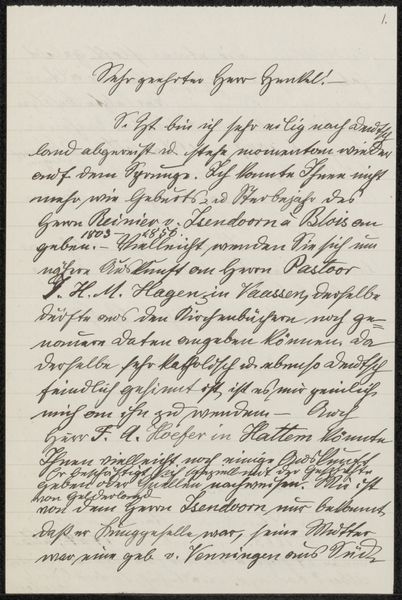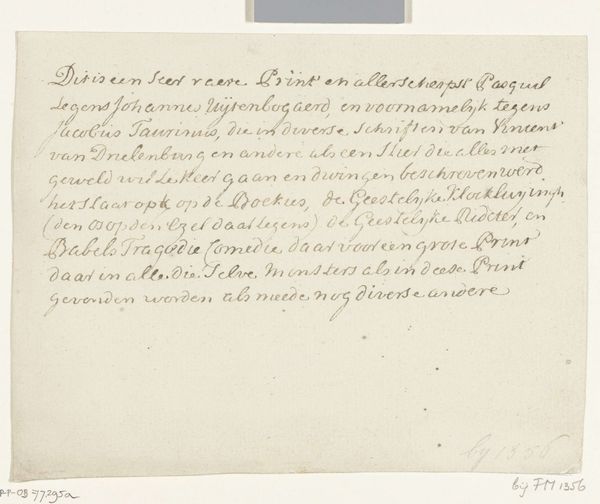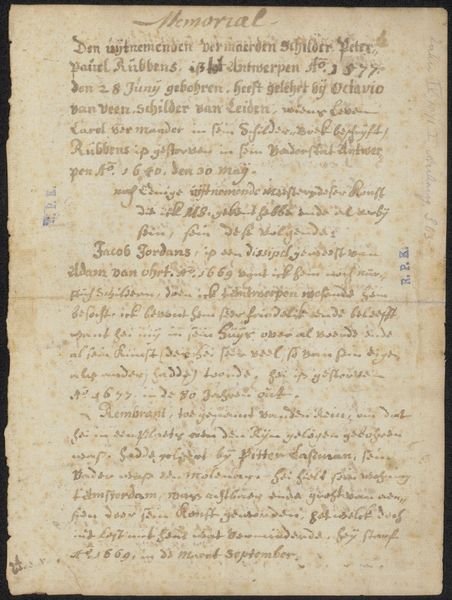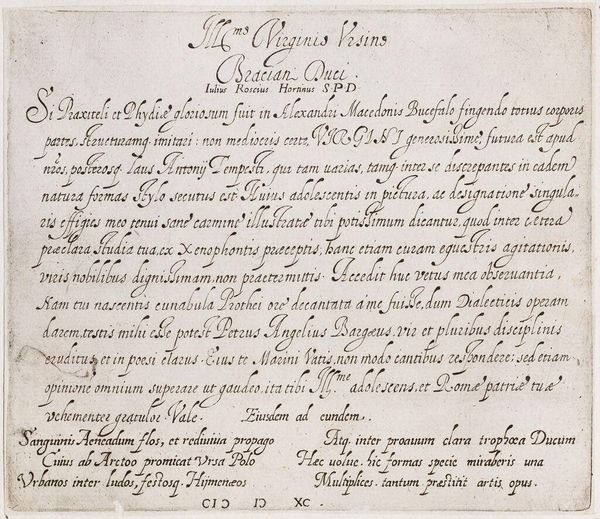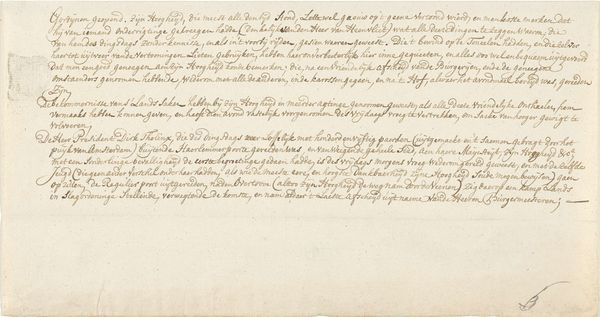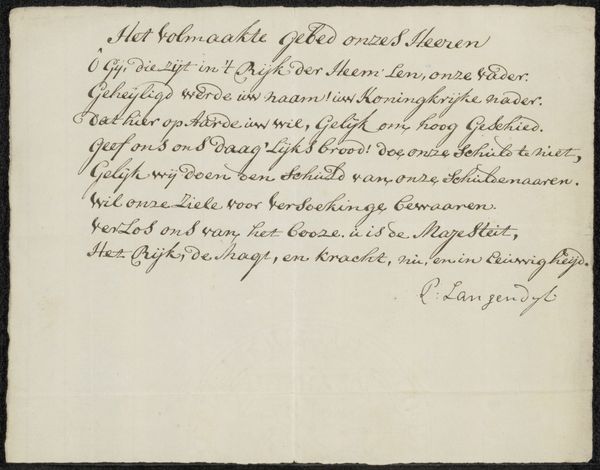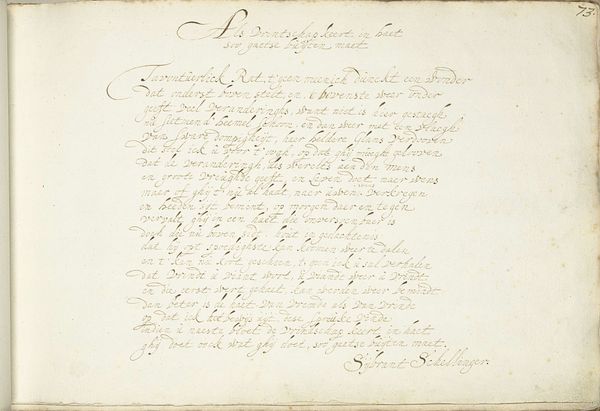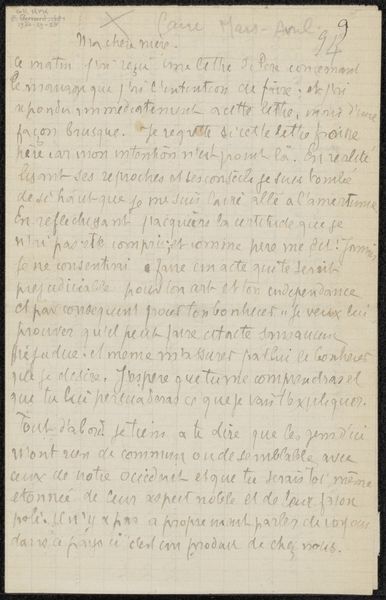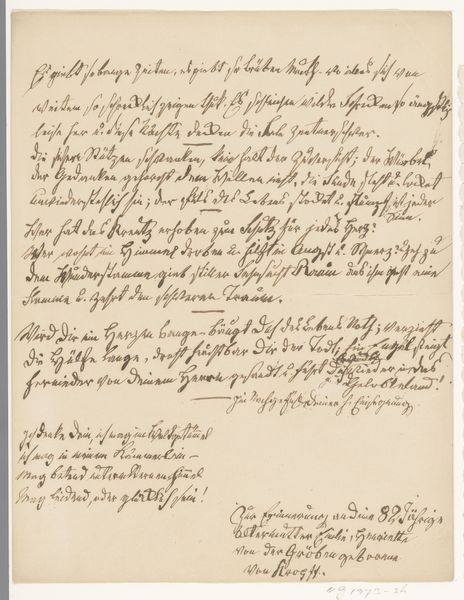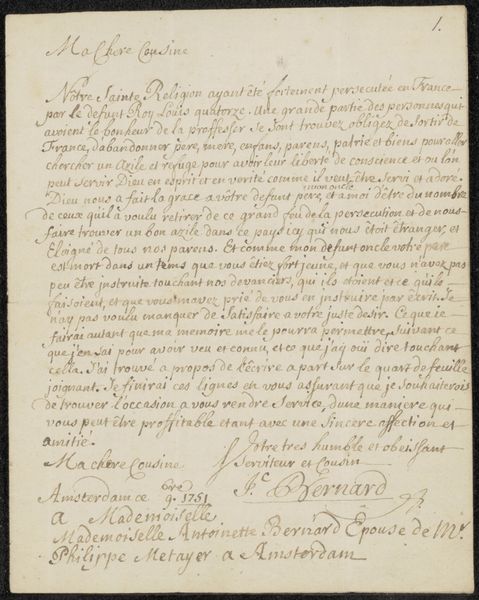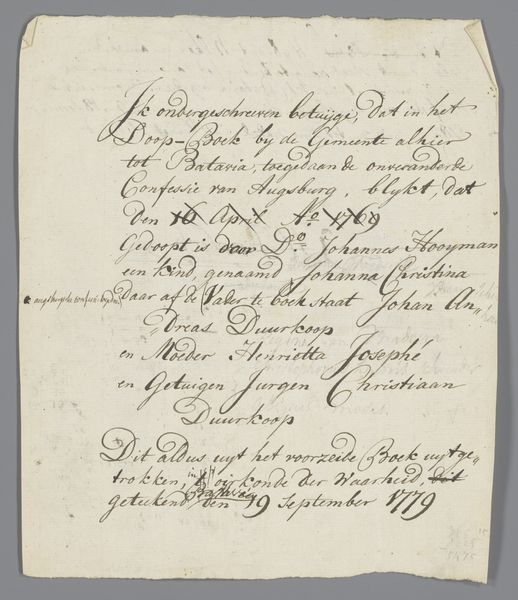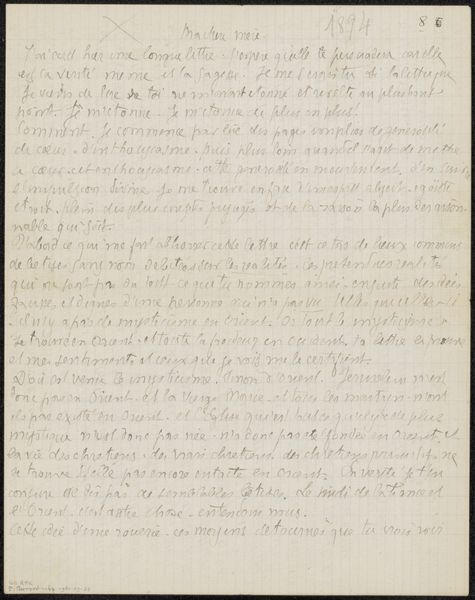
drawing, paper, ink
#
drawing
#
paper
#
11_renaissance
#
ink
#
calligraphy
Dimensions: height 139 mm, width 164 mm
Copyright: Rijks Museum: Open Domain
Curator: Well, this is quite a find. This artwork is called "Opdracht aan de Hertog van Bracciano," or "Commission to the Duke of Bracciano" created in 1590 by Antonio Tempesta. The piece, held at the Rijksmuseum, is an ink drawing on paper. What are your first thoughts? Editor: It's… a page of text. Intensely calligraphic, of course. I’m drawn to the visual texture created by the dense lines of ink, but I find my modern eyes a bit overwhelmed by the density of the lettering itself. Curator: That density is the point, I believe. The overall visual effect would have been highly prized. Remember that Tempesta lived in a period where calligraphy signified social status. It acted as both a communication medium, and a visual display of power. Editor: Absolutely. I'm aware the drawing is, in essence, a very elaborate, beautifully designed letter of commission to a Duke, no less. So, there's definitely a performance aspect to it – showing off the artist's, and by extension the patron's, refined sensibilities and resources. Curator: Precisely. It's also a document that subtly reveals cultural expectations about knowledge. The Latin, the script itself… it’s all about showing connection with history and erudition. Notice how Tempesta also alludes to the Duke’s interests – his appreciation for horses, his status. All meant to please, obviously. Editor: Yes, and that classical language really roots this work in a specific historical context, evoking the humanist ideals of the Renaissance. It also tells us that this object, beyond its immediate function, participates in a larger conversation about values and identity in that time. Curator: A conversation aimed squarely at the elite, it must be added. And what's remarkable to me is that, centuries later, this ink on paper continues to silently communicate the cultural priorities of its era. We still feel the weight of the Duke’s social standing and the artist’s carefully constructed tribute. Editor: So true. It is kind of impressive that we’re getting echoes of cultural aspiration, almost a type of designed admiration, transmitted across the ages from just the details in the penmanship and wording of a single drawing. Curator: In a way, this assignment speaks volumes. A beautiful, eloquent example of power rendered as art. Editor: I concur entirely. It does present an exceptionally captivating window into a world steeped in both artistry and authority.
Comments
No comments
Be the first to comment and join the conversation on the ultimate creative platform.
